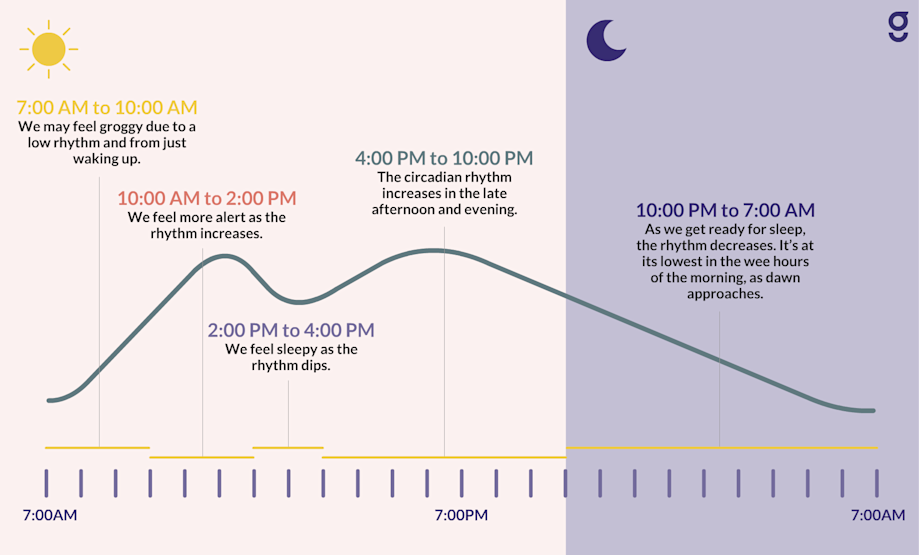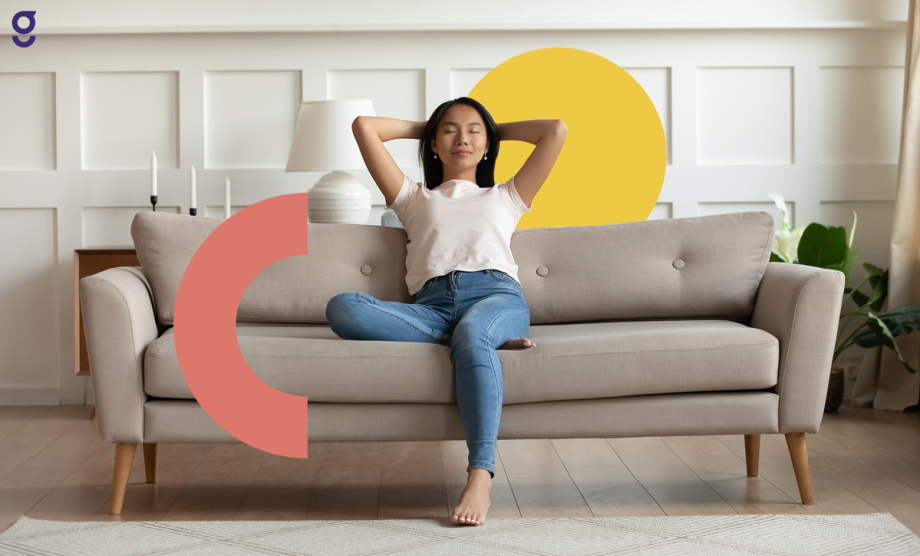How to Take a Power Nap (and Why)
Everyone knows a power nap feels good, but did you know power naps fit right into your normal sleep/wake cycle? And, if done right, they can really help you get through the day. With many of us working from home, there’s an increased opportunity and better environment for taking a nap.
We Are Built To Nap
Our bodies have an internal timekeeper called the circadian rhythm that helps maintain your sleep-wake cycle. The circadian rhythm helps you fall asleep, wake up, and feel more or less sleepy throughout the day.
Circadian rhythm ebbs and flows during the day.
From 7:00 AM to 10:00 AM. We may feel groggy due to a low rhythm and from just waking up.
10:00 AM to 2:00 PM. We feel more alert as the rhythm increases.
It’s 2:00 PM to 4:00 PM. We feel sleepy as the rhythm dips.
From 4:00 PM to 10:00 PM. The circadian rhythm increases in the late afternoon and evening.
And, 10:00 PM to 7:00 AM. As we get ready for sleep, the rhythm decreases. It’s at its lowest in the wee hours of the morning as dawn approaches.

The Power Nap, Executed
The circadian rhythm is low between 2:00 to 4:00 PM. To improve your alertness, productivity, memory, and function, a power nap may be the answer.
Think about how you feel in the afternoon following lunch. This time even has names: the "post-lunch dip," "afternoon slump", or "food coma". It may be hard to concentrate and stay alert. Work tasks and other activities may be especially challenging.
In some circumstances, it can even be unsafe. The possibility of accidents with construction workers, delivery persons, or long-distance drivers becomes much more real. And, the chance of mistakes with healthcare workers increases - The National Library of Medicine lists hundreds of studies on the effects and solutions for fatigue among physicians, especially medical interns and residents.
Keys to Power Napping
In studies, a 10-minute afternoon nap is the most effective in improving alertness and productivity. You may feel groggy when you wake up from naps that are much longer. And, it makes sense to nap when your circadian rhythm dips - around 2:00 PM.
Napping During the Workday
In Other Cultures
Some cultures already embrace the concept of the power nap. There is the tradition of the "siesta" in Spain. In China, people take an hour break midday to rest. In Japan, "inemuri" means napping while present, and is seen as a sign of hard work. There is also the concept of "fear sleep" in Indonesia where people can fall asleep instantly to deal with heightened anxiety and stress.
In Business
In order to enhance productivity and decrease risk, businesses are encouraged to allow employees to nap when needed. The Centers for Disease Control’s (CDC) Workplace Health Resource Center recommends dedicated physical space, as well as scheduling, to allow for napping. Many organizations have already incorporated nap rooms into their offices. Google, NASA, and Ben & Jerry’s support napping by providing specific spaces like “napping pods” for their employees.
Power Napping Tips
In addition to the length (about 10 minutes) and the timing (about 2:00 PM), there are other ways you can make the most of your power naps:
Try deep-breathing or another relaxation technique as you start. Goodpath provides many mind-body techniques in their programs.
Choose a quiet, darkened location. A sleep mask may help.
Lie down (on your bed if at home) or sit in a comfortable chair.
Listen to soft music or white noise.
Give yourself a few minutes to recover after your nap. Try a bit of stretching and walking around.
Now that you’re working from home, take the opportunity to enjoy a power nap. Improve your productivity, your focus, and simply enjoy the feeling!
Sleep, beyond power naps, can be affected by other parts of our environment, such as stress and our diet. Goodpath focuses on all of that through its holistic assessment for building every personalized sleep program for its members. Start your personalized sleep program today
